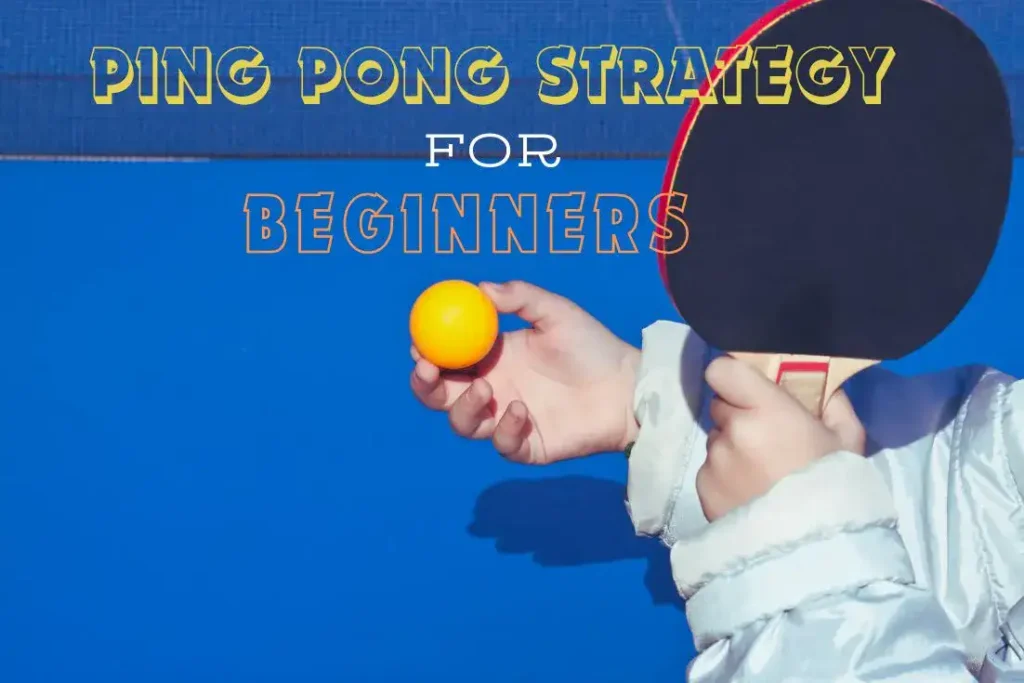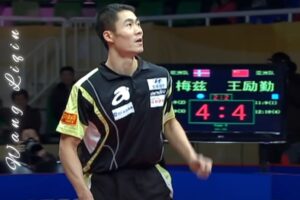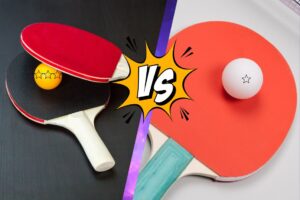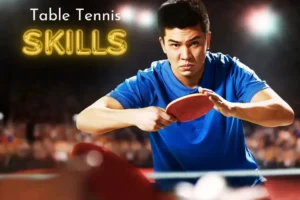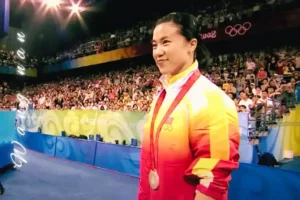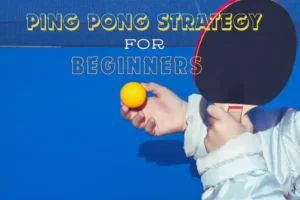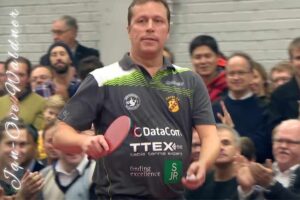Are you a new ping pong enthusiast eager to elevate your game but unsure where to start? Welcome to your ultimate guide on ping pong strategy for beginners! Whether you’re picking up the paddle for the first time or aiming to refine your skills, understanding the right strategies can be the difference between a casual game and a victorious one.
In this blog, we’ll walk you through the essential techniques and proven ping pong strategies for beginners that will transform you from a novice into a confident player. With the right guidance, ping pong becomes more than just a fun activity—it’s a game of skill, strategy, and endless excitement. So, let’s embark on this journey together and unlock your full potential on the table!
Understanding the Basics
1. Grasping the Fundamentals of Grip
The grip is the cornerstone of ping pong. How you hold the paddle can influence every aspect of your game, from control to spin to power.
- Penhold Grip: In this grip, the player holds the paddle as one would a pen, with the handle resting between the thumb and index finger. This grip is especially popular in Asia and is favored for its quick wrist movements and ease of playing close to the table. The penhold grip allows for a more natural wrist action, making it easier to generate spin and control the ball’s trajectory. However, it can limit the range of motion on the backhand side, requiring beginners to develop a strong forehand.
- Shakehand Grip: The shakehand grip is the most common grip used worldwide and is akin to shaking someone’s hand. The paddle is held with the handle resting in the palm, while the index finger is placed along the back of the paddle. This grip offers a balanced approach to offense and defense, allowing for easier transitions between forehand and backhand strokes. For beginners, the shakehand grip is often recommended due to its versatility and comfort.
- Choosing the Right Grip: Beginners should try both grips to see which feels more comfortable and natural. The key is to choose a grip that allows for relaxed wrist movement and consistent control. A firm yet flexible grip will enable the player to adjust the paddle angle with ease, helping in both defensive and offensive situations.
2. Perfecting the Stance and Footwork
A solid stance and efficient footwork are critical to executing any ping pong strategy. They form the foundation from which all other skills are built.
- Ready Position: The ready position is the stance you adopt when anticipating the ball. Stand with your feet shoulder-width apart, knees slightly bent, and body leaning forward. Your weight should be on the balls of your feet, ready to move in any direction. This stance provides balance and allows for quick lateral movement, which is essential for responding to fast shots.
- Footwork Drills: Proper footwork is the key to positioning yourself correctly for each shot. Beginners should practice side-to-side shuffling, ensuring they maintain balance while moving quickly. Forward and backward footwork drills help in adjusting to the ball’s placement on the table. The ability to move swiftly and efficiently across the table will greatly enhance your ability to return shots and maintain a competitive edge.
- Importance of Anticipation: Anticipating your opponent’s next move can make all the difference. By observing your opponent’s body language, paddle position, and the angle of their stroke, you can predict the ball’s trajectory and position yourself accordingly. This foresight allows for better shot preparation and more effective returns.
3. Mastering the Basic Strokes
To become proficient in ping pong, beginners must first master the basic strokes. These fundamental techniques are the building blocks of more advanced strategies.
- Forehand Drive: The forehand drive is an attacking stroke that generates topspin, making the ball dip quickly after crossing the net. To execute a forehand drive, start with the paddle at waist level, swing forward, and finish with the paddle above eye level. This stroke is powerful and is often used to put pressure on the opponent by keeping them on the defensive.
- Backhand Drive: The backhand drive mirrors the forehand drive but is performed on the opposite side of the body. It is crucial for maintaining a balanced offense. Beginners should focus on keeping their wrists relaxed and using the forearm to generate power. A well-executed backhand drive can catch opponents off guard and open up opportunities for winning shots.
- Push: The push is a defensive stroke used to return low, slow balls with backspin. It’s essential for controlling the pace of the game and forcing errors from the opponent. To perform a push, angle the paddle slightly downward and use a gentle, forward motion. This stroke is particularly useful against aggressive opponents who prefer fast rallies.
- Block: The block is another defensive stroke used to counter strong attacks. When blocking, the paddle is held steady in the path of the ball, allowing the ball’s momentum to bounce it back over the net. The key to an effective block is to maintain control and direct the ball to less favorable areas of the opponent’s side.
- Topspin and Backspin: Spin is a crucial element in ping pong. Topspin makes the ball dip quickly after crossing the net, making it harder to return. Backspin, on the other hand, causes the ball to float and bounce lower, often forcing the opponent into a weaker return. Beginners should practice both types of spin, learning how to generate them and how to respond to them.
4. Developing a Consistent Serve
Serving is a pivotal aspect of ping pong strategy. A good serve can set the tone for the rally and put the opponent on the back foot right from the start.
- Basic Serve: For beginners, it’s important to master a basic backspin or topspin serve. Start by tossing the ball a few inches into the air, then strike it with the paddle, focusing on consistency and accuracy. The goal is to serve the ball so that it barely clears the net and lands deep on the opponent’s side, making it difficult to return.
- Spin Variation: Once comfortable with the basic serve, beginners should experiment with different spins. Adding topspin, backspin, or sidespin to the serve can make it more unpredictable and challenging for the opponent. The more variety in your serves, the harder it will be for your opponent to anticipate and counter them.
- Serve Placement: The placement of your serve is just as important as the spin. Beginners should practice serving to different areas of the opponent’s side, such as the corners, down the line, or into the opponent’s body. Varying the placement of serves keeps the opponent guessing and disrupts their rhythm, a key aspect of an effective ping pong strategy.
Advanced Strategies for Beginners
5. Understanding the Importance of Placement
Placement in ping pong is about controlling where the ball lands on the opponent’s side of the table. Effective placement can force your opponent into uncomfortable positions and create openings for attack.
- Wide Angles: Placing the ball at wide angles forces your opponent to stretch and move quickly. This can disrupt their positioning and make it difficult for them to return the ball effectively. Beginners should practice hitting the ball to the far corners of the table, pushing the opponent out of position, and setting up opportunities for a winning shot.
- Deep and Short Balls: Mixing up deep and short placements can keep your opponent off balance. A deep ball pushes the opponent away from the table, while a short ball forces them to move in quickly. Alternating between deep and short placements prevents the opponent from settling into a rhythm and increases the chances of forcing an error.
- Targeting Weaknesses: Every player has weaknesses, and part of an effective ping pong strategy is identifying and exploiting them. If your opponent struggles with backhand shots, focus on placing the ball on their backhand side. If they have poor footwork, aim for wide angles to test their mobility. Beginners should pay attention to their opponent’s play style and adjust their placement strategy accordingly.
6. Developing a Counterattack ping pong Strategy
A counterattack is a powerful response to an opponent’s aggressive shot. For beginners, learning how to counterattack effectively can turn the tide of a match.
- Blocking with Precision: The block is often the first line of defense against a strong attack. When blocking, focus on precision and control. Aim to return the ball to difficult areas of the opponent’s side, such as the corners or deep into the table. A well-placed block can neutralize an opponent’s attack and give you time to transition to offense.
- Forehand and Backhand Counter: In fast-paced rallies, being able to counterattack with both forehand and backhand strokes is crucial. Beginners should practice these counterattacks, focusing on timing and control. The goal is to use the opponent’s speed against them, returning the ball with enough force and precision to put them on the defensive.
- Timing and Anticipation: Successful counterattacks in ping pong strategy for beginners depend on timing and anticipation. By reading the opponent’s body language and paddle angle, you can predict their shot and position yourself for a strong return. Timing is critical; a well-timed counterattack can catch the opponent off guard and shift the momentum in your favor.
7. Mastering the Art of Spin Control
Ping pong strategy for beginners involves mastering spin, a fundamental aspect that can manipulate the ball’s trajectory, speed, and bounce. Understanding how to generate, recognize, and counter-spin is crucial for beginners looking to improve their game.
- Generating Spin: Spin is generated by brushing the paddle against the ball at an angle, rather than hitting it squarely. Beginners should practice using their wrist and forearm to generate topspin, backspin, and sidespin. Experimenting with different paddle angles and speeds will help in learning how to control the amount and type of spin applied to the ball.
- Reading Spin: Recognizing the type of spin your opponent is using is crucial in ping pong strategy for beginners. Pay attention to the paddle’s movement and the ball’s behavior after it bounces on the table. For example, a ball with a topspin will dip quickly, while a ball with a backspin will float and bounce lower. Understanding these characteristics is a key part of ping pong strategy, as it helps you prepare your response effectively.
- Countering Spin: To counter an opponent’s spin, adjust the angle of your paddle. For topspin, angle the paddle slightly downward to counter the upward force. For backspin, angle the paddle upward to lift the ball over the net. Sidespin can be countered by angling the paddle in the opposite direction of the spin. Practicing these adjustments will improve your ability to return spin-heavy shots effectively.
Psychological Aspects of Ping Pong
8. Building Mental Toughness
Mental toughness is just as important as physical skills in ping pong. The ability to stay focused, calm, and composed during a match can be the difference between winning and losing.
- Staying Focused: Concentration is crucial in ping pong strategy, where the game can change in an instant. Beginners should practice staying mentally engaged throughout the match, avoiding distractions, and maintaining a clear focus on the ball. Developing a pre-serve routine can help in staying focused and mentally preparing for each point.
- Managing Pressure: Pressure can affect decision-making and performance. Beginners should practice playing in high-pressure situations, such as in matches or against stronger opponents. Learning to stay calm under pressure will help in making better strategic decisions during critical moments.
- Positive Visualization: Visualizing successful shots and outcomes can boost confidence and reduce anxiety. Before a match, beginners should take a few moments to visualize themselves executing their strategies successfully. Positive visualization can create a winning mindset and improve overall performance.
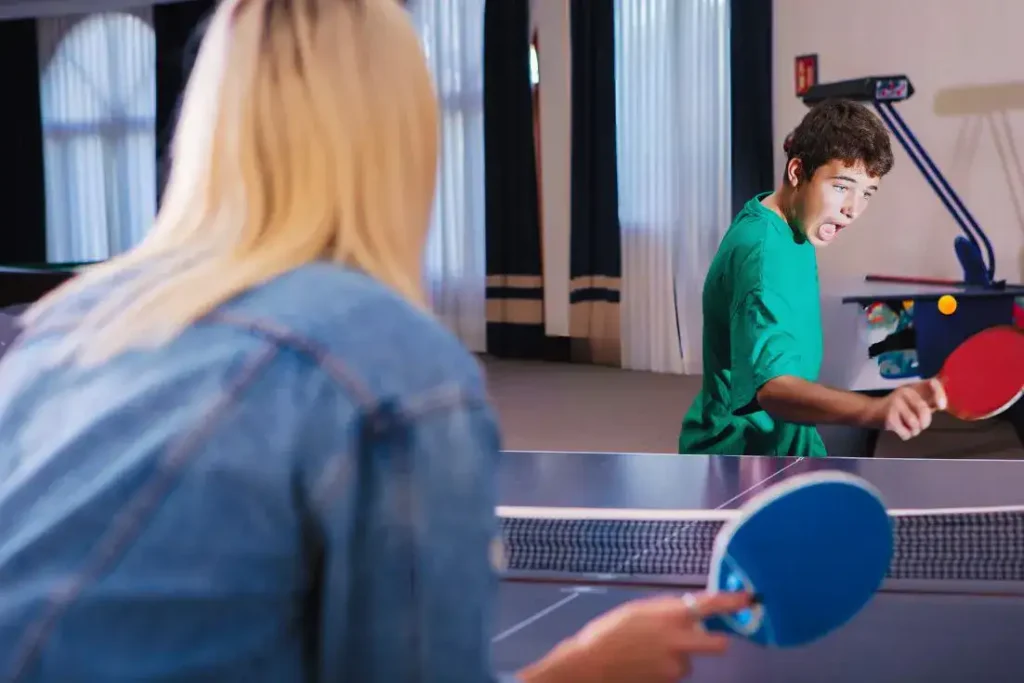
Common Mistakes for Beginner Ping Pong Players
9. Overcommitting to Power
One common mistake among beginners in ping pong strategy for beginners is overcommitting to power shots. While power is important, focusing too much on it can lead to mistakes.
- Losing Control: In an attempt to hit powerful shots, beginners often lose control, resulting in errors and missed opportunities. It’s important to strike a balance between power and precision. A controlled shot that lands in the right place is more effective than a powerful shot that goes out of bounds.
- Ignoring Spin: Beginners who focus solely on power may neglect the importance of spin. Spin can be used to control the ball’s trajectory and make it more difficult for the opponent to return. By incorporating spin into their game, beginners can create a more well-rounded and effective ping pong strategy.
10. Poor Footwork
Footwork is essential in ping pong, yet many beginners neglect it, leading to poor positioning and missed shots.
- Being Out of Position: Without proper footwork, beginners may find themselves out of position, unable to reach the ball in time. This often results in weak returns or missed shots. Practicing footwork drills regularly will help in developing the agility and speed needed to stay in position during a match.
- Standing Too Close or Too Far: Another common mistake is standing too close or too far from the table. Standing too close limits reaction time, while standing too far makes it difficult to reach short balls. Beginners should find a comfortable distance that allows them to move freely and respond to both short and long shots.
11. Inconsistent Serve
A reliable service is crucial, but beginners often struggle with consistency.
- Lack of Practice: Inconsistent serves are often the result of inadequate practice. Beginners should spend time honing their serve, focusing on accuracy, spin, and placement. A consistent serve can give you an advantage by putting pressure on the opponent from the very start of the rally.
- Predictability: Another mistake is being too predictable with serves. If the opponent can anticipate your serve, they can easily counter it. Beginners should vary their serves in terms of speed, spin, and placement to keep the opponent guessing.
Training Tips for Beginners
12. Drills for Improving Consistency
Consistency is one of the most important qualities in a ping pong strategy for beginners. Developing this trait early on will set the foundation for more advanced skills and strategies.
- Forehand and Backhand Rallies: One of the simplest yet most effective drills is practicing rallies with a partner. Start with forehand rallies, aiming to maintain a steady rhythm. Focus on keeping the ball on the table, with each shot landing in the same area. After mastering the forehand, switch to backhand rallies, using the same principles. The goal is to develop a natural feel for the ball, improving your ability to control its placement. As you progress, challenge yourself to increase the speed of the rally without sacrificing accuracy.
- Multi-Ball Drills: Multi-ball training is an advanced drill that can be highly beneficial for beginners aiming to build consistency. In this drill, a coach or partner rapidly feeds multiple balls to you, one after the other. The constant stream of balls forces you to react quickly and maintain a consistent stroke. This drill improves hand-eye coordination, reflexes, and the ability to sustain a high level of performance under pressure. It also simulates the pace of a real match, helping you adapt to different speeds and spins.
- Target Practice: Accuracy is a crucial component of ping pong strategy for beginners. To improve this, place small targets, such as pieces of paper or cups, on various spots on the table. The goal is to hit these targets consistently with both forehand and backhand shots. Start with larger targets and gradually reduce their size as your accuracy improves. This drill enhances your ability to place the ball precisely where you want it, making your shots more difficult for opponents to return. It also helps in developing a strategic approach to the game, as accurate placement can force opponents out of position.
- Serve and Return Drills: Consistency in serving and returning is key to gaining an edge in matches. Practice serving specific areas of the opponent’s side, focusing on both spin and placement. After serving, practice returning serves from different angles and spins. This drill helps in developing a consistent and reliable serve while also improving your ability to return difficult serves. Consistency in these areas will give you more control over the flow of the game and put pressure on your opponent from the outset.
- Shadow Play: Shadow play involves practicing strokes and footwork without a ball. This drill is particularly useful for beginners as it allows you to focus on perfecting your technique without the distraction of the ball. Stand in front of a mirror and practice your forehand, backhand, and serve movements. Pay attention to your body positioning, paddle angle, and follow-through. This drill helps in ingraining proper technique into muscle memory, which is essential for consistency in real matches.
13. Building Endurance and Agility
Physical fitness plays a crucial role in ping pong, impacting your ability to sustain long rallies, react quickly, and maintain focus throughout the match. For beginners, building endurance and agility can significantly enhance performance.
- Footwork Drills: Good footwork is the foundation of agility in ping pong. Incorporate footwork drills, such as lateral shuffles, crossover steps, and quick pivots, into your training routine. Start by moving side to side along the length of the table, focusing on maintaining balance and quickness. Then, practice moving forward and backward to simulate reacting to short and deep balls. These drills improve your ability to stay in position during rallies, enabling you to reach the ball more efficiently and execute your shots with greater accuracy.
- Interval Training: Interval training involves alternating between periods of high-intensity activity and rest. This type of training is ideal for building endurance in ping pong, where quick bursts of energy are followed by brief moments of rest between points. An example of interval training for ping pong might include 30 seconds of rapid forehand and backhand shots, followed by 15 seconds of rest, repeated for several cycles. This training improves cardiovascular fitness and helps you maintain a high level of energy throughout a match.
- Reaction Drills: Quick reflexes are essential in ping pong, where the ball can travel at high speeds. Reaction drills help sharpen your reflexes and improve your ability to respond quickly to fast shots. One effective drill involves having a partner or coach randomly drop balls from different heights and angles, which you must react to and return as quickly as possible. Another drill is the use of a reaction ball, a small, irregularly shaped ball that bounces unpredictably, forcing you to react and adjust your movements on the fly. These drills enhance your ability to anticipate and react to the ball’s movement, giving you an edge in fast-paced rallies.
- Plyometric Exercises: Plyometric exercises, such as box jumps, squat jumps, and lateral bounds, are excellent for developing explosive power and agility. These exercises mimic the quick, explosive movements required in ping pong, such as lunging for a ball or making a sudden pivot. Incorporating plyometric exercises into your fitness routine can improve your ability to generate power in your shots and move quickly around the table. Over time, this will enhance your overall agility and reaction time, allowing you to cover the table more effectively and execute your shots with precision.
- Strength Training: While ping pong is not a sport that requires heavy lifting, strength training can still play an important role in building endurance and preventing injuries. Focus on exercises that strengthen your core, legs, and shoulders, such as planks, squats, and shoulder presses. A strong core helps in maintaining balance and stability during quick movements, while strong legs and shoulders provide the power needed for explosive shots. Strength training also improves overall fitness, making it easier to maintain a high level of performance throughout a match.
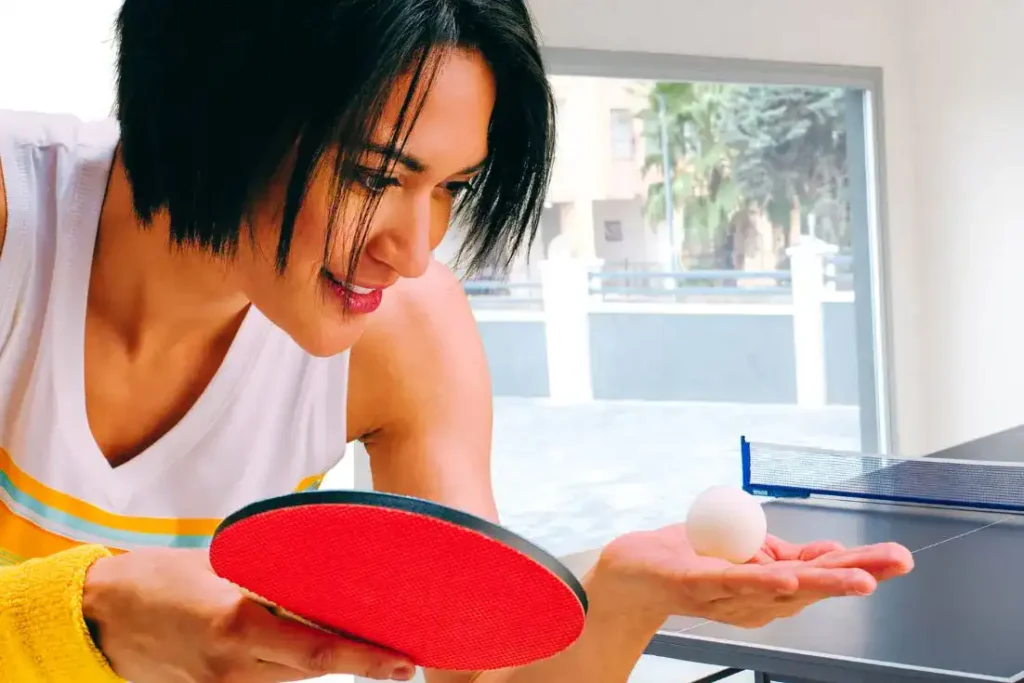
Advice from Professional Players for Beginners
14. Focus on Fundamentals
Professional ping pong players unanimously agree that mastering the fundamentals is crucial for any beginner looking to enhance their ping pong strategy for beginners. The basics form the foundation upon which all advanced techniques are built.
- Master Your Grip: Professionals often emphasize the importance of mastering your grip early on. Whether you choose the penhold or shakehand grip, it’s essential to be comfortable and confident with your choice. A proper grip allows for better control over the paddle, which is critical for executing consistent and accurate shots. Professionals suggest spending time experimenting with different grips to find what feels most natural and then sticking with it. Consistency in your grip will lead to more consistent play.
- Perfect Your Strokes: Professionals advise beginners to focus on perfecting their basic strokes, such as the forehand and backhand drives. These strokes are the bread and butter of any ping pong game, and being able to execute them flawlessly will give you a significant advantage. Professionals recommend practicing these strokes repetitively until they become second nature. This repetition not only builds muscle memory but also helps in developing the precision and consistency needed for higher-level play.
- Footwork is Key: Professionals stress that good footwork is just as important as having a strong stroke in ping pong strategy for beginners. Proper footwork allows you to position yourself correctly for each shot, enabling you to maintain control and accuracy. Beginners should focus on staying light on their feet, moving quickly, and maintaining balance throughout the rally. Professionals often suggest practicing footwork drills regularly to develop the agility and speed needed to cover the table effectively.
- Consistency Over Power: Many professionals caution against focusing too much on power at the beginner level. While powerful shots can be impressive, they often lead to inconsistency and errors if not executed correctly. Instead, professionals advise beginners to prioritize consistency, aiming to keep the ball on the table and in play. Over time, as your technique improves, you can gradually introduce more power into your shots. The key is to develop a strong foundation of consistent play before attempting more aggressive strategies.
15. Develop a Strong Mental Game
The mental aspect of ping pong is often overlooked by beginners, but professionals know that it plays a crucial role in success on the table.
- Stay Calm Under Pressure: Professionals emphasize the importance of staying calm and composed, especially during high-pressure situations. Whether it’s a match point or a long rally, maintaining your focus and composure can be the difference between winning and losing. Professionals suggest practicing mindfulness techniques, such as deep breathing and visualization, to help manage stress and stay focused during critical moments. A calm mind allows you to think clearly and make better strategic decisions.
- Learn from Every Match: Professionals encourage beginners to view every match, whether a win or a loss, as a learning opportunity. After each match, take the time to reflect on what went well and what could be improved. Professionals often review their own matches to identify patterns in their play, such as recurring mistakes or successful strategies. By analyzing your performance and making adjustments, you can continuously improve your game and develop a deeper understanding of your strengths and weaknesses.
- Build Mental Toughness: Ping pong strategy for beginners often includes developing mental toughness, a quality that all top-level players possess. It involves staying determined, focused, and resilient, even when things aren’t going your way. Professionals suggest setting small, achievable goals to build confidence and momentum. For example, aim to improve your consistency over a series of matches or focus on mastering a particular stroke. Achieving these goals can boost your confidence and help you stay motivated, even during challenging times.
- Embrace the Process: Professionals often emphasize the importance of embracing the learning process as part of an effective ping pong strategy. Improvement in ping pong doesn’t happen overnight, and there will be ups and downs along the way. Professionals encourage beginners to enjoy the journey of learning and improving, rather than getting discouraged by setbacks. By maintaining a positive attitude and staying committed to your goals, you’ll develop the mental resilience needed to succeed in the long term.
16. Practice with a Purpose
One of the most common pieces of advice from professional players is to practice with a clear purpose. Purposeful practice is what separates good players from great ones.
- Set Specific Goals: Professionals emphasize the importance of setting specific, measurable goals for each practice session. Rather than simply playing for the sake of playing, have a clear objective in mind, such as improving your serve, working on your footwork, or mastering a new stroke. By focusing on specific areas of improvement, you can make the most of your practice time and see tangible progress in your skills.
- Quality Over Quantity: Professionals often stress that the quality of practice is more important than the quantity. It’s better to have a short, focused practice session where you’re fully engaged and working on specific skills, rather than a long, unfocused session where you’re simply going through the motions. Professionals suggest practicing with intensity and concentration, paying attention to technique, and making adjustments as needed. This approach leads to more effective skill development and better overall performance.
- Keep It Fun: While practice is essential for improvement, professionals also remind beginners to keep it fun. Enjoying the game and staying motivated is key to long-term success. Professionals suggest mixing up your practice routine with different drills, playing matches with friends, or challenging yourself with new skills. Keeping the practice environment enjoyable and engaging will help you stay committed and enthusiastic about your progress.
- Track Your Progress: Professionals recommend keeping track of your progress over time, especially when following a ping pong strategy for beginners. Professionals recommend keeping track of your progress over time. This can be done by maintaining a practice journal, where you record what you worked on, how you felt, and what you learned during each session. Tracking your progress helps you see how far you’ve come and identify areas that still need improvement. It also allows you to celebrate your achievements, which can boost your confidence and keep you motivated to continue improving.
FAQs
Q. What are the basic ping pong strategy every beginner should know in ping pong?
Ans: Basic ping pong strategy includes maintaining a consistent rally, focusing on accurate placement, and mastering a reliable serve. These fundamentals help beginners develop control and build confidence.
Q. How can I improve my ping pong skills as a beginner?
Ans: Improvement comes with regular practice, focusing on consistency, mastering basic strokes, and practicing footwork. It’s also important to play with different opponents to adapt to various playing styles.
Q. 3. What are the most common mistakes beginners make in ping pong?
Ans: Common mistakes include overhitting the ball, poor footwork, inconsistent grip, and trying to use advanced techniques without mastering the basics. Avoiding these errors can accelerate your progress.
Q. What equipment should beginners prioritize for their table tennis pursuits?
Ans: For beginners, investing in quality ping pong paddles, suitable table tennis rubbers, and comfortable table tennis shoes is pivotal. As skills progress, seeking advice on upgraded equipment can significantly enhance gameplay.
Q. How can players maintain focus and improve their mental approach during intense table tennis matches?
Ans: Developing mental resilience involves practicing mindfulness, fostering a positive mindset, and employing techniques such as controlled breathing or visualization to stay centered amidst the intensity of matches.
Q. How do I develop a winning mindset as a beginner in ping pong?
Ans: Focus on setting achievable goals, staying calm under pressure, and viewing each game as a learning experience. A positive mindset, coupled with consistent practice, will lead to steady improvement.
In Closing
Mastering ping pong strategy for beginners is your first step toward becoming a formidable player. The techniques and tips shared in this guide are not just about winning—they’re about developing a deep appreciation for the game and its nuances. As you apply these ping pong strategies for beginners, you’ll find yourself not only improving your skills but also falling in love with the sport.
Remember, every great player started as a beginner, just like you. With patience, practice, and a passion for the game, you’ll soon see your efforts pay off. Now is the time to grab your paddle, step up to the table, and let your journey in ping pong truly begin!
